-
 Bitcoin
Bitcoin $105,045.4964
-2.69% -
 Ethereum
Ethereum $2,523.1428
-8.12% -
 Tether USDt
Tether USDt $1.0003
0.04% -
 XRP
XRP $2.1322
-4.95% -
 BNB
BNB $651.1269
-2.04% -
 Solana
Solana $145.0960
-8.59% -
 USDC
USDC $0.9999
0.02% -
 Dogecoin
Dogecoin $0.1769
-6.05% -
 TRON
TRON $0.2698
-1.70% -
 Cardano
Cardano $0.6324
-7.16% -
 Hyperliquid
Hyperliquid $40.5644
-5.20% -
 Sui
Sui $3.0163
-9.61% -
 Chainlink
Chainlink $13.1373
-8.80% -
 Bitcoin Cash
Bitcoin Cash $430.4956
-1.86% -
 UNUS SED LEO
UNUS SED LEO $9.0436
1.90% -
 Stellar
Stellar $0.2580
-5.85% -
 Avalanche
Avalanche $19.0739
-9.24% -
 Toncoin
Toncoin $2.9809
-6.53% -
 Shiba Inu
Shiba Inu $0.0...01191
-5.48% -
 Hedera
Hedera $0.1554
-7.47% -
 Litecoin
Litecoin $84.2778
-5.46% -
 Polkadot
Polkadot $3.8124
-6.03% -
 Ethena USDe
Ethena USDe $1.0004
0.00% -
 Monero
Monero $312.2453
-3.04% -
 Dai
Dai $0.9998
0.00% -
 Bitget Token
Bitget Token $4.5182
-4.00% -
 Uniswap
Uniswap $7.3870
-6.27% -
 Pepe
Pepe $0.0...01076
-11.47% -
 Aave
Aave $279.4127
-7.67% -
 Pi
Pi $0.5645
-9.30%
Breaking through the neckline and stepping back: Should I add positions or wait and see?
When the price steps back to the neckline after breaking through in a head and shoulders pattern, consider volume, market sentiment, and risk management before adding positions.
Jun 10, 2025 at 03:14 am
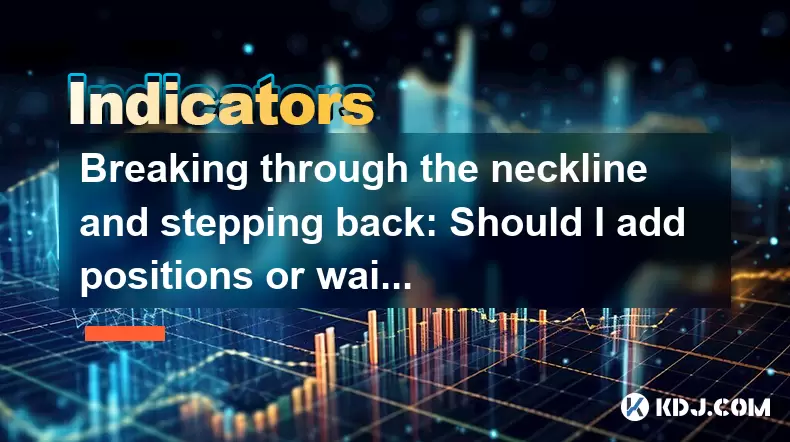
In the dynamic world of cryptocurrency trading, understanding chart patterns can significantly influence your decision-making process. One such pattern that frequently catches the attention of traders is the head and shoulders pattern. This pattern can signal a potential reversal in the current trend, and its completion is marked by a breakout through the neckline. However, a common dilemma traders face is what to do when the price breaks through the neckline and then steps back. Should you add to your positions, or should you wait and see? Let's delve into this scenario in detail.
Understanding the Head and Shoulders Pattern
The head and shoulders pattern is a bearish reversal pattern that typically forms after an uptrend. It consists of three peaks, with the middle peak (the head) being the highest and the two side peaks (the shoulders) being lower and roughly equal in height. The line connecting the lowest points of the two troughs between the peaks is called the neckline. A break below this neckline confirms the pattern and signals that a downtrend might be imminent.
The Breakthrough of the Neckline
When the price breaks through the neckline, it is often seen as a confirmation of the head and shoulders pattern. Traders who have been monitoring this pattern might see this as an opportunity to enter a short position or to add to existing short positions. The breakthrough of the neckline is a critical moment because it suggests that the previous uptrend has lost its momentum and that sellers have taken control.
The Step Back After the Breakthrough
However, the market is rarely straightforward, and after breaking through the neckline, the price might step back or retrace to the neckline. This step back can create uncertainty among traders. Some might see it as a chance to enter or add to positions at a potentially better price, while others might view it as a sign that the breakout was a false signal and that the trend might not reverse as expected.
Factors to Consider Before Adding Positions
When the price steps back to the neckline after a breakthrough, several factors should be considered before deciding whether to add to your positions or wait and see:
- Volume: The volume during the breakthrough and the step back can provide insights. A high volume during the breakthrough and a lower volume during the step back might suggest that the breakout was legitimate and that the step back is just a minor correction.
- Market Sentiment: Understanding the broader market sentiment can help. If other indicators and market analyses suggest a bearish outlook, it might be more favorable to add to short positions.
- Risk Management: Always consider your risk tolerance and position sizing. Adding to positions increases your exposure, so ensure you are comfortable with the potential losses.
- Technical Indicators: Other technical indicators like the RSI, MACD, or moving averages can provide additional confirmation. If these indicators align with the bearish signal from the head and shoulders pattern, it might be a good time to add positions.
Strategies for Adding Positions
If you decide to add positions during the step back, here are some strategies you might consider:
- Scaling In: Instead of adding all your positions at once, you can scale in by adding smaller amounts at different price levels. This can help manage risk and potentially improve your average entry price.
- Setting Stop-Losses: Always set stop-losses to protect your positions. When adding to positions during a step back, consider adjusting your stop-loss levels to account for the new risk exposure.
- Using Limit Orders: Placing limit orders to add positions can help you enter at your desired price levels without needing to monitor the market constantly.
Strategies for Waiting and Seeing
On the other hand, if you choose to wait and see, consider these strategies:
- Monitoring Price Action: Keep a close eye on the price action around the neckline. If the price fails to break below the neckline again, it might indicate a false breakout, and waiting could save you from entering a losing trade.
- Using Technical Analysis: Continue to use technical analysis to assess the market. If other indicators start to show bullish signals, it might be wise to wait and see before taking any action.
- Setting Alerts: Set price alerts around the neckline to notify you of any significant movements. This can help you react quickly if the price breaks below the neckline again.
Practical Example of a Head and Shoulders Pattern
Let's walk through a hypothetical example to illustrate the decision-making process:
- Identify the Pattern: You notice a head and shoulders pattern forming on the chart of Bitcoin (BTC). The left shoulder peaks at $50,000, the head at $55,000, and the right shoulder at $50,000. The neckline is drawn at $48,000.
- Breakthrough: The price breaks below the neckline to $47,000 on high volume, confirming the head and shoulders pattern.
- Step Back: The price then steps back to $48,000, retesting the neckline.
At this point, you have two options:
- Add Positions: If you believe the breakout is valid and the step back is just a minor correction, you might decide to add to your short positions at $48,000. You could scale in by adding a small amount at $48,000 and another at $47,500, setting your stop-loss at $48,500 to manage risk.
- Wait and See: If you are unsure about the breakout, you might choose to wait and see. You set a price alert at $47,500 and continue to monitor other technical indicators. If the price breaks below $47,500, you might enter a short position; if it fails to break below the neckline again, you might decide to stay out of the trade.
Frequently Asked Questions
Q: How can I differentiate between a genuine head and shoulders pattern and a false signal?
A: To differentiate between a genuine head and shoulders pattern and a false signal, pay attention to the volume during the breakout. A genuine breakout is often accompanied by high volume. Additionally, look for confirmation from other technical indicators like the RSI or MACD. If these indicators also suggest a bearish reversal, the pattern is more likely to be genuine.
Q: What should I do if the price breaks through the neckline but then continues to rise above the right shoulder?
A: If the price breaks through the neckline but then rises above the right shoulder, it might indicate a false breakout. In this case, it's wise to stay out of the trade or exit any existing positions. Continue to monitor the price action and wait for another clear signal before entering a new trade.
Q: How important is the neckline in the head and shoulders pattern?
A: The neckline is crucial in the head and shoulders pattern as it acts as a confirmation level. A break below the neckline signals a potential reversal from an uptrend to a downtrend. The neckline also serves as a key level for setting stop-losses and for monitoring potential retests or false breakouts.
Q: Can the head and shoulders pattern form during a downtrend?
A: Yes, the head and shoulders pattern can also form during a downtrend, known as an inverse head and shoulders pattern. This pattern signals a potential reversal from a downtrend to an uptrend. The formation and analysis of the inverse pattern are similar to the regular head and shoulders pattern but in reverse.
Disclaimer:info@kdj.com
The information provided is not trading advice. kdj.com does not assume any responsibility for any investments made based on the information provided in this article. Cryptocurrencies are highly volatile and it is highly recommended that you invest with caution after thorough research!
If you believe that the content used on this website infringes your copyright, please contact us immediately (info@kdj.com) and we will delete it promptly.
- Ethereum (ETH) ETF Inflows Hit 4-Month Highs, BlackRock's iShares Ethereum Trust (ETHA) Dominates
- 2025-06-14 02:40:12
- Bitcoin Price (BTC Price) Fell Down to USD 1,08,000 Today
- 2025-06-14 02:40:12
- SB Bank Has Entered Its Pre-Launch Phase
- 2025-06-14 02:35:13
- Pistachio, the Newly Launched Mobile-First Onchain Deobank, Integrates with Plume Mainnet
- 2025-06-14 02:35:13
- Circle Internet Group's stock surged 10.7% on Wednesday after it announced two major deals
- 2025-06-14 02:35:13
- Wednesday's Softer-than-Expected U.S. Inflation Has Likely Set the Stage for Accelerated Gains in Bitcoin
- 2025-06-14 02:35:13
Related knowledge
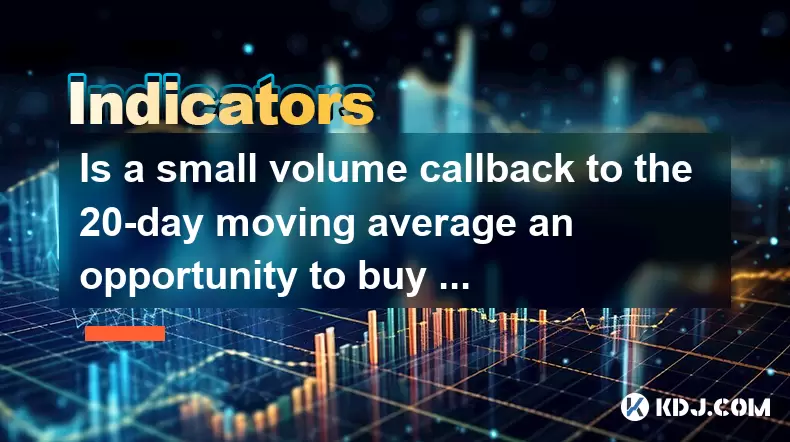
Is a small volume callback to the 20-day moving average an opportunity to buy low? What is the key to look at?
Jun 14,2025 at 02:28am
Understanding the 20-Day Moving Average in Cryptocurrency TradingIn cryptocurrency trading, the 20-day moving average (20DMA) is a commonly used technical indicator that helps traders assess the short-term trend of an asset. It calculates the average price of a cryptocurrency over the last 20 days and smooths out price volatility. When a coin experience...
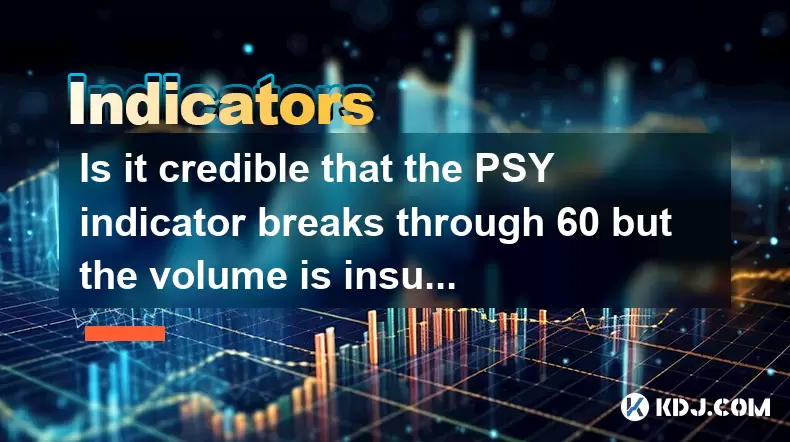
Is it credible that the PSY indicator breaks through 60 but the volume is insufficient?
Jun 14,2025 at 12:14am
Understanding the PSY Indicator in Cryptocurrency TradingThe Psychological Line (PSY) indicator is a momentum oscillator used primarily to measure the sentiment of traders and investors in financial markets, including the cryptocurrency space. It calculates the ratio of days where prices closed higher versus lower over a specified period, typically 12 o...
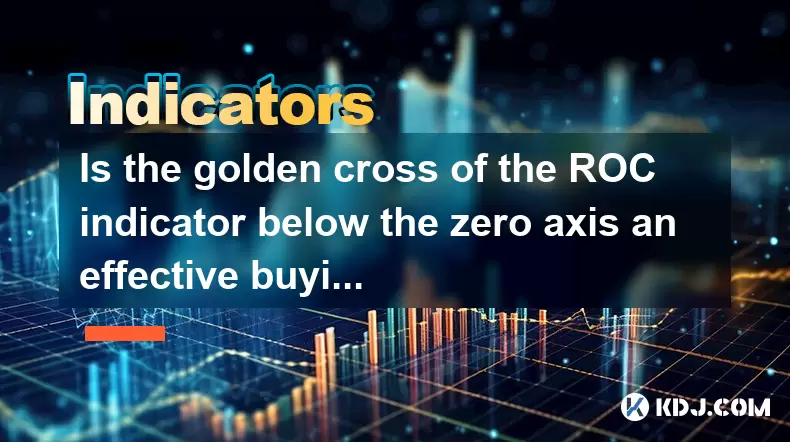
Is the golden cross of the ROC indicator below the zero axis an effective buying point?
Jun 14,2025 at 01:29am
Understanding the ROC Indicator and Its SignificanceThe Rate of Change (ROC) indicator is a momentum oscillator used in technical analysis to measure the percentage change in price between the current closing price and the closing price from a set number of periods ago. This tool helps traders assess the speed at which prices are changing, offering insi...

Will the RSI fall after the top divergence? How to improve the judgment accuracy?
Jun 13,2025 at 11:21pm
Understanding RSI and Top Divergence in Cryptocurrency TradingThe Relative Strength Index (RSI) is a momentum oscillator widely used in cryptocurrency trading to measure the speed and change of price movements. It typically ranges from 0 to 100, with levels above 70 considered overbought and below 30 considered oversold. In crypto markets, where volatil...
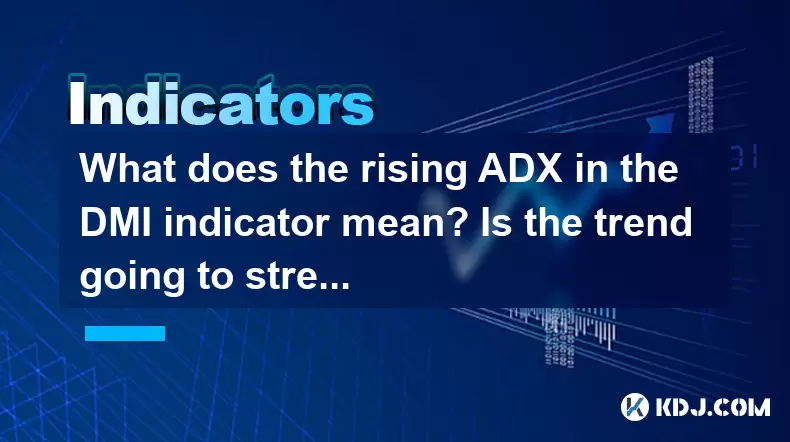
What does the rising ADX in the DMI indicator mean? Is the trend going to strengthen?
Jun 14,2025 at 02:14am
Understanding the DMI Indicator and ADXThe Directional Movement Index (DMI) is a technical analysis tool used to identify the direction and strength of a trend. It consists of two lines: the Positive Directional Indicator (+DI) and the Negative Directional Indicator (-DI). Alongside these, the ADX line measures the strength of the trend, regardless of i...
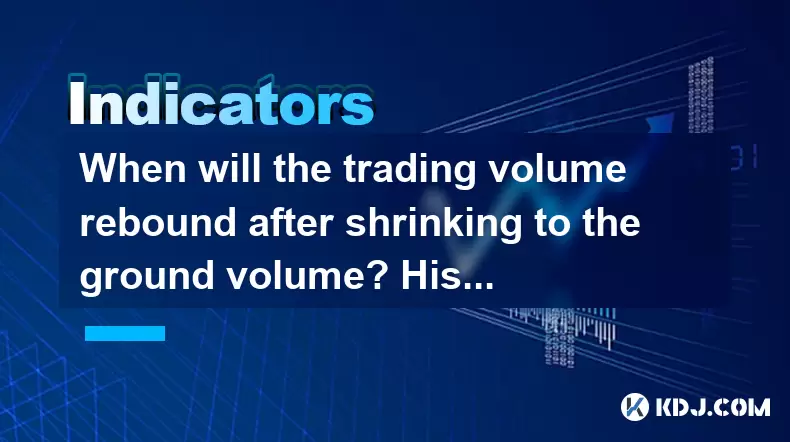
When will the trading volume rebound after shrinking to the ground volume? Historical percentile comparison method
Jun 13,2025 at 03:36pm
Understanding the Ground Volume Concept in Cryptocurrency MarketsIn cryptocurrency trading, 'ground volume' refers to a period when the trading volume of a particular asset or market drops significantly, often reaching multi-month or even multi-year lows. This phenomenon typically signals a lack of interest from traders and investors, suggesting that th...

Is a small volume callback to the 20-day moving average an opportunity to buy low? What is the key to look at?
Jun 14,2025 at 02:28am
Understanding the 20-Day Moving Average in Cryptocurrency TradingIn cryptocurrency trading, the 20-day moving average (20DMA) is a commonly used technical indicator that helps traders assess the short-term trend of an asset. It calculates the average price of a cryptocurrency over the last 20 days and smooths out price volatility. When a coin experience...

Is it credible that the PSY indicator breaks through 60 but the volume is insufficient?
Jun 14,2025 at 12:14am
Understanding the PSY Indicator in Cryptocurrency TradingThe Psychological Line (PSY) indicator is a momentum oscillator used primarily to measure the sentiment of traders and investors in financial markets, including the cryptocurrency space. It calculates the ratio of days where prices closed higher versus lower over a specified period, typically 12 o...

Is the golden cross of the ROC indicator below the zero axis an effective buying point?
Jun 14,2025 at 01:29am
Understanding the ROC Indicator and Its SignificanceThe Rate of Change (ROC) indicator is a momentum oscillator used in technical analysis to measure the percentage change in price between the current closing price and the closing price from a set number of periods ago. This tool helps traders assess the speed at which prices are changing, offering insi...

Will the RSI fall after the top divergence? How to improve the judgment accuracy?
Jun 13,2025 at 11:21pm
Understanding RSI and Top Divergence in Cryptocurrency TradingThe Relative Strength Index (RSI) is a momentum oscillator widely used in cryptocurrency trading to measure the speed and change of price movements. It typically ranges from 0 to 100, with levels above 70 considered overbought and below 30 considered oversold. In crypto markets, where volatil...

What does the rising ADX in the DMI indicator mean? Is the trend going to strengthen?
Jun 14,2025 at 02:14am
Understanding the DMI Indicator and ADXThe Directional Movement Index (DMI) is a technical analysis tool used to identify the direction and strength of a trend. It consists of two lines: the Positive Directional Indicator (+DI) and the Negative Directional Indicator (-DI). Alongside these, the ADX line measures the strength of the trend, regardless of i...

When will the trading volume rebound after shrinking to the ground volume? Historical percentile comparison method
Jun 13,2025 at 03:36pm
Understanding the Ground Volume Concept in Cryptocurrency MarketsIn cryptocurrency trading, 'ground volume' refers to a period when the trading volume of a particular asset or market drops significantly, often reaching multi-month or even multi-year lows. This phenomenon typically signals a lack of interest from traders and investors, suggesting that th...
See all articles

























































































